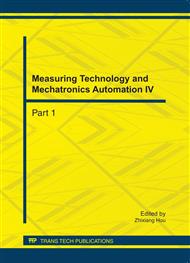p.42
p.46
p.50
p.54
p.58
p.62
p.66
p.70
p.74
Algorithm Study of Face Recognition on Improved 2DLDA
Abstract:
Linear Discriminant Analysis (LDA) [1] is a well-known method for face recognition in feature extraction and dimension reduction. To solve the “small sample” effect of LDA, Two-Dimensional Linear Discriminant Analysis (2DLDA) [2] has been used for face recognition recently,but its could hardly take use of the relationship between the adjacent scatter matrix. In this paper, I improved the between-class scatter matrix, proposed paired-class scatter matrix for face representation and recognition. In this new method, a paired between-class scatter matrix distance metric is used to measure the distance between random paired between-class scatter matrix. To test this new method, ORL face database is used and the results show that the paired between-class scatter matrix based 2DLDA method (N2DLDA) outperforms the 2DLDA method and achieves higher classification accuracy than the 2DLDA algorithm.
Info:
Periodical:
Pages:
58-61
Citation:
Online since:
October 2011
Authors:
Keywords:
Price:
Сopyright:
© 2012 Trans Tech Publications Ltd. All Rights Reserved
Share:
Citation:


